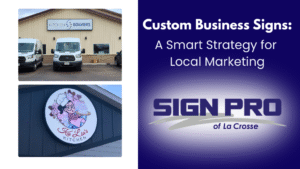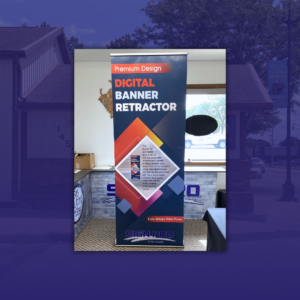The Importance of ADA Compliance
The power of signage for businesses to enhance brand visibility and create lasting impressions on customers cannot be understated. However, have you considered whether your signage meets all of your customer’s needs? When it comes to creating signage, one aspect that businesses often overlook is ADA compliance.
The Americans with Disabilities Act (ADA) mandates that all businesses must ensure their signs are accessible to individuals with disabilities. While this may seem like an added expense, investing in an experienced professional for ADA-compliant signage can save your company money in the long run. Therefore, the importance of ADA compliance, the potential consequences of non-compliance, and how working with a knowledgeable sign expert can benefit your business cannot be understated.
Understanding ADA Compliance
The ADA was enacted in 1990 to protect the rights of individuals with disabilities and ensure they have equal access to goods, services, and facilities, including signage. ADA-compliant signs are designed to be accessible to people with visual impairments, mobility limitations, and other disabilities, ensuring they can effectively navigate and engage with your business.
Designing ADA-compliant signage is crucial to ensure accessibility for all individuals. Here are some design tips to help you achieve compliance:
- Braille and Raised Characters Business signs must include Grade 2 Braille and raised characters for essential information, such as room numbers and restroom designations.
- Contrasting Colors and Fonts: Using contrasting colors and fonts provides better readability for individuals with low vision.
- Mounting Height and Location: Signage must be mounted at an appropriate height and location for easy viewing and tactile access.
- Pictograms and Symbols: Incorporating pictograms and symbols can aid individuals with language barriers or cognitive disabilities.
- Materials: Choose non-glare and non-reflective materials for ease of reading in various lighting conditions.
- Language: Offer multilingual signage in diverse environments to cater to all visitors.
- Exit Routes: Clearly mark exit routes and emergency information with ADA-compliant signage for safe evacuation.
Keep in mind that adhering to ADA guidelines not only enhances accessibility for all your customers but also demonstrates a commitment to inclusivity and social responsibility.
The Consequences of Non-Compliance
Failure to adhere to ADA signage requirements can result in severe consequences for your business. Here are some potential issues you could face:
- Legal Penalties and Lawsuits: Non-compliance can lead to legal action, hefty fines, and costly lawsuits. This not only drains your finances but also damages your company’s reputation.
- Loss of Customers: Inaccessible signage can be frustrating for customers with disabilities, leading them to take their business elsewhere.
- Negative Publicity: Social media and review platforms amplify customer experiences, both positive and negative. Non-compliance may attract negative publicity, affecting your brand image. Keep in mind the power of word of mouth!
- Remediation Costs: If your signage is non-compliant, you’ll need to invest in replacing or updating them to meet ADA standards, incurring additional expenses.
The Benefits of Working with an Experienced Sign Professional
Now that you understand the importance of ADA compliance, let’s explore how partnering with an experienced sign professional can benefit your business and save you money:
- Expert Knowledge: ADA regulations can be complex, and they evolve over time. A skilled sign expert stays up-to-date with the latest guidelines, ensuring your signage is always compliant.
- Avoid Costly Mistakes: Non-compliant signs might require rework, resulting in extra expenses. Working with a professional ensures your signs are done right the first time, saving you time and money.
- Tailored Solutions: An experienced sign professional understands the unique requirements of your business. They can create customized, visually appealing, and compliant signage that aligns with your brand.
- High-Quality Materials: Using quality materials guarantees your signage is durable and long-lasting, reducing the need for frequent replacements.
- Enhanced Brand Perception: ADA-compliant signage demonstrates your commitment to inclusivity and accessibility. This fosters a positive perception among customers.
- Avoiding Legal Issues: By adhering to ADA regulations, you mitigate the risk of legal disputes and costly penalties, therefore safeguarding your business’s financial stability.
Conclusion
Incorporating ADA-compliant signage is not just a legal requirement; it is a reflection of your company’s values and commitment to inclusivity. Partnering with an experienced sign professional is a wise investment that can save your company time, money, and legal headaches in the long run.
From avoiding legal penalties to enhancing brand perception, ADA-compliant signage brings multiple benefits to your business. At SignPro, we take pride in creating visually stunning, accessible, and compliant signage that leaves a lasting impression on your customers. Contact us today to make your business accessible to all.













